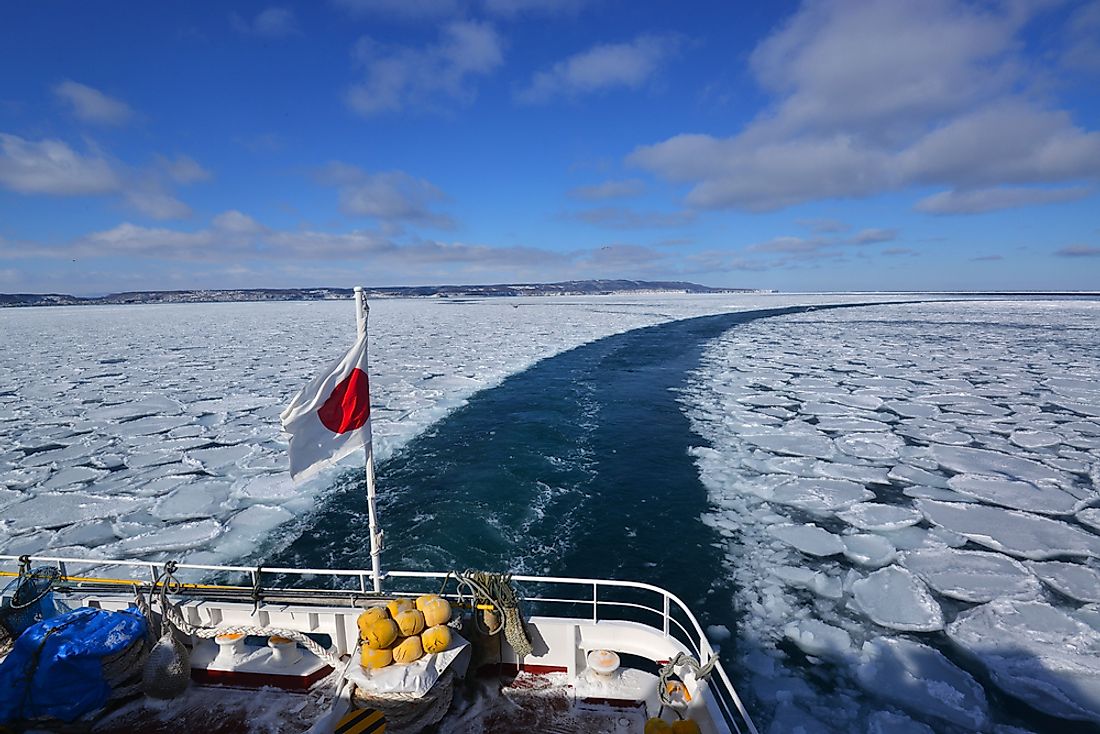What Is Drift Ice?

Drift ice refers to the pieces of ice which are detached hence they are moved by winds and ocean currents. Drift ice differs from the fast ice in that, fast ice is either attached to the shorelines or objects such as the grounded icebergs and shoals. Drift ice is carried away by the winds and sea currents, hence termed as drift ice due to their mobility. Drift ice is classified according to the size of floes. Floes are the discrete pieces of ice measuring 20 meters or more across. The classification may either be small, medium, big, vast, or giant drift ice depending on size.
Formation Of Drift Ice
As noted above, drift ice is as a result of detaching of large ice. Large ice may be broken under different conditions hence leaving small pieces of cracked ice. Moving currents and winds would then move the detached ice from one place in the sea to the other. The breaking of ice may be caused by strong sea currents and winds. These pieces are thus free from the main one and can be swept by the waters hence the name “drift ice.” In contrast, fast ice is attached to the shoreline as well as other stationary objects. In this case, fast ice would only move when the objects they are connected to are also moved.
Where Is Drift Ice Found?
Ice is mostly found in the cold regions of the world. These regions range from mountain peaks and Polar Regions. However, the most notable ones are the Arctic and the Antarctic ice packs. The Arctic ice pack is found in the northern Polar Regions while the Antarctic ice pack is located to the south. Other cold regions also have ice though they are less in size as compared to the polar areas.
Seasonal changes in atmospheric conditions have significant impacts on the ice packs. During the cold seasons, sea waters are cold hence ice covers most parts of the polar areas. When temperatures rise, there is a significant increase in water levels in the sea; thus, water moves from the equatorial and tropical regions. Consequently, moving water and winds cause the packs of ice to break into pieces. These discrete pieces of ice are driven by the winds and sea water hence, drift ice is formed.
Impacts Of Drift Ice
Drift ice may have significant impacts on sea transport as well as security. Large pieces of drift ice may hinder sea vessels from navigating in the sea. The pieces pose a threat since the high speed of the drifting ice may collide with ships which may cause leakage hence sinking of the vessels. Security may also be hindered since navigation by security personnel has to be stopped to avoid fatalities. Besides, drift ice may have geological impacts and the influence on the biosphere. Since drift ice move from one region to the other, the materials transported consist of different particles which are essential for geological studies.
Furthermore, drift ice may have climatic impacts in various regions. Drift ice may move farther to the other areas and in the process, brings a cooling effect to the warm regions. Another significant impact of drift ice is tourism.Notable regions where tourists visit seasonally because of drift ice include Japan. The sea of Okhotsk is well known for the occurrence of drift ice every year, especially along the coast of Hokkaido.











